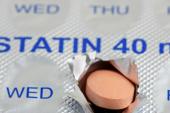No Attenuation in CVD Risk Reduction for Patients Treated to Very Low LDLs: FOURIER
Benefit was seen in patients who got their LDL levels down to less than 40 mg/dL, which is historically foreign territory.

Lower may indeed be better, suggests a new analysis of the FOURIER trial addressing outcomes in patients whose LDL cholesterol was brought below 40 mg/dL. The findings, say investigators, support some of the more aggressive LDL-cholesterol targets for high risk patients with atherosclerotic cardiovascular disease (ASCVD).
“I think we have seen the guidelines move to lower and lower cholesterol goals over the years as the trials continue to show that lower is better,” said Nicholas Marston, MD (Brigham and Women’s Hospital, Boston, MA), who presented the results earlier this week at the European Society of Cardiology Congress 2021. “I think a goal of less than 40 mg/dL is probably the next step in this progression. We know from FOURIER and ODYSSEY that it’s very safe to go low. As we demonstrated here, there is continued effectiveness below 40 mg/dL in patients with high-risk ASCVD.”
Study findings were published simultaneously in Circulation.
The European Society of Cardiology/European Atherosclerosis Society (ESC/EAS) guidelines for the management of dyslipidemia recommend that high-risk patients be treated to a target of less than 55 mg/dL (or 1.4 mmol/L). However, the ESC/EAS also opened the door to more aggressive LDL-lowering in very-high-risk ASCVD patients, which they defined as an ASCVD patient who has had multiple cardiovascular events in 2 years despite taking optimal statin therapy. In these patients, the ESC/EAS recommend LDL-cholesterol levels of less than 40 mg/dL (or 1.0 mmol/L).
“It is a smaller group of patients,” said Marston, referring to those at very high risk who are targeted by the ESC/EAS guidelines, “but it does put 40 mg/dL on the map. It has led to some debate as to whether there is justification for doing so and we wanted to test that hypothesis, that there was benefit for LDL-lowering below 40 mg/dL.”
A prior FOURIER analysis indicated that the benefits of evolocumab applied similarly to patients whose baseline LDL was greater than or equal to 70 mg/dL, but did not address the question of whether lowering beyond the currently recommended targets yields additional benefit. Another meta-analysis showed that for individuals with baseline LDL-cholesterol levels of 70 mg/dL or less, lowering LDL cholesterol another 38.7 mg/dL, led to a reduction in major cardiovascular events.
Howard Weintraub, MD (NYU Langone Medical Center, New York, NY), who wasn’t involved in the new analysis, called this latest study very solid, saying that it strengthens the evidence base. The cumulative data to date, he said, has not shown any drop-off in cardiovascular risk protection as patients get to lower and lower LDL levels.
“You have to remember that this was a 2.2-year study,” Weintraub told TCTMD. “Obviously, life is not a 2-year study and life is not a 5-year study, but the bottom line is that you can only imagine what the benefit could have been if the study was carried out to 5 years. The benefit would have been even better with more exposure to the experimental treatment. I don’t think the results are surprising—I think it’s validating—and I think they should be a wake-up that the use of PCSK9 inhibitors is something that permits the attainment of LDL-cholesterol levels well below 70 mg/dL, and well below 55 mg/dL, which may not be achievable with a statin and ezetimibe.”
Doctors, Weintraub stressed, have reason to strive for very low LDL-cholesterol levels in patients with high-risk ASCVD.
No Attenuation of Benefit
To determine the relative benefit of LDL cholesterol-lowering to these very low levels, Marston and colleagues calculated the hazard ratio for major adverse cardiovascular events for evolocumab versus placebo across the range of baseline LDL levels of patients in the trial.
Researchers found that when baseline LDL-cholesterol levels were lower than 93 mg/dL, which was the median level in FOURIER, the mean LDL achieved was lower than 40 mg/dL. To TCTMD, Marson said that if there was no benefit of lowering LDL cholesterol below 40 mg/dL, they’d expect to see the hazard ratio for MACE to be progressively attenuated in those with progressively lower baseline LDL levels, but this was not seen: LDL-lowering conferred benefit no matter how low the level was at baseline. In fact, there appeared to be even larger reductions in the risk of MACE among those with the lowest starting LDL levels, said Marston.
Moreover, the absolute reduction in risk was the same in patients who started with a baseline LDL level of 70 to less than 90 mg/dL and 90 to 110 mg/dL (absolute risk reduction was 2.1% and 1.9%, respectively).
“The benefit was consistent even in people who achieved LDL-cholesterol levels well below 40 mg/dL,” said Marston. “For example, some of the patients, up to one-third of their LDL-lowering was happening below 40 mg/dL. They were starting off in the 60s and ending up in the 20s. They didn’t have any attenuation in their cardiovascular benefit. That, to us, was very reassuring. It’s consistent with what we thought and what we’ve seen in other trials. We continue to see that lower is better.”
He stressed that FOURIER only included a high-risk cohort—that being patients with prior MI, prior stroke, or symptomatic peripheral artery disease. “I don’t think we can extrapolate this to lower-risk ASCVD patients or to diabetics,” said Marston. He added that they are conducting another study with evolocumab—VESALIUS-CV—that will include high-risk ASCVD patients who have not had a prior event and those with diabetes but without ASCVD.
In the United States, the American College of Cardiology/American Heart Association (ACC/AHA) do not recommend treatment targets, but instead say that LDL-cholesterol levels should be reduced by 50% or more with a high-intensity statin in all patients with ASCVD. For very-high-risk patients with LDL-cholesterol levels remaining greater than 70 mg/dL despite statin treatment, the ACC/AHA advise adding ezetimibe first followed by the addition of a PCSK9 inhibitor if the LDL levels remain elevated.
To TCTMD, Weintraub noted it’s typically been harder for European patients to gain access to PCSK9 inhibitors that might be needed to achieve the very low levels reported here, even though the ESC/EAS guidelines take a more aggressive approach to cholesterol management, even lowering the threshold necessary for patients to qualify as very high risk, as compared definitions used in the US.
The type of high-risk ASCVD patients enrolled in FOURIER are frequently seen in clinical practice, he said.
“It’s not a small cohort,” he said. “From my exposure in medicine, I believe a lot of physicians have developed inertia with regard to LDL-lowering because the [US] guidelines have been ambiguous—in 2013 we had ‘statin treatment groups’ and in 2018 we have ‘thresholds.’ These were two new concepts to doctors. For 20 years, we had treatment goals.”
Marston said it takes time for new data to work its way into clinical guidelines and then clinical practice. While there may be some clinical inertia among physicians who stop once they achieve a target of roughly 70 mg/dL, the addition of other drugs, such as ezetimibe and PCSK9 inhibitors, has helped physicians. “It depends what you have to do to get there,” he said. “As more of therapies become available, and they become more accessible to patients, I think we’re going to slowly keep pushing lower and lower. Hopefully the US will lower its targets.”
The ESC guidelines on CVD prevention, which were launched this week, recommend a target of less than 55 mg/dL in patients with established ASCVD, with the addition of ezetimibe and a PCSK9 inhibitor if the patient doesn’t get to goal. They do not make any specific recommendations for the highest-risk patients with multiple CVD events in the past 2 years.
Michael O’Riordan is the Managing Editor for TCTMD. He completed his undergraduate degrees at Queen’s University in Kingston, ON, and…
Read Full BioSources
Marston NA, Giugliano RP, Park J-G, et al. Cardiovascular benefit of lowering LDL cholesterol below 40 mg/dL. Circulation. 2021;Epub ahead of print.
Disclosures
- Marston reports grant support from the National Institutes of Health and involvement in clinical trials with Amgen, Pfizer, Novartis, and AstraZeneca (without personal fees, payments, or increase in salary).





Comments